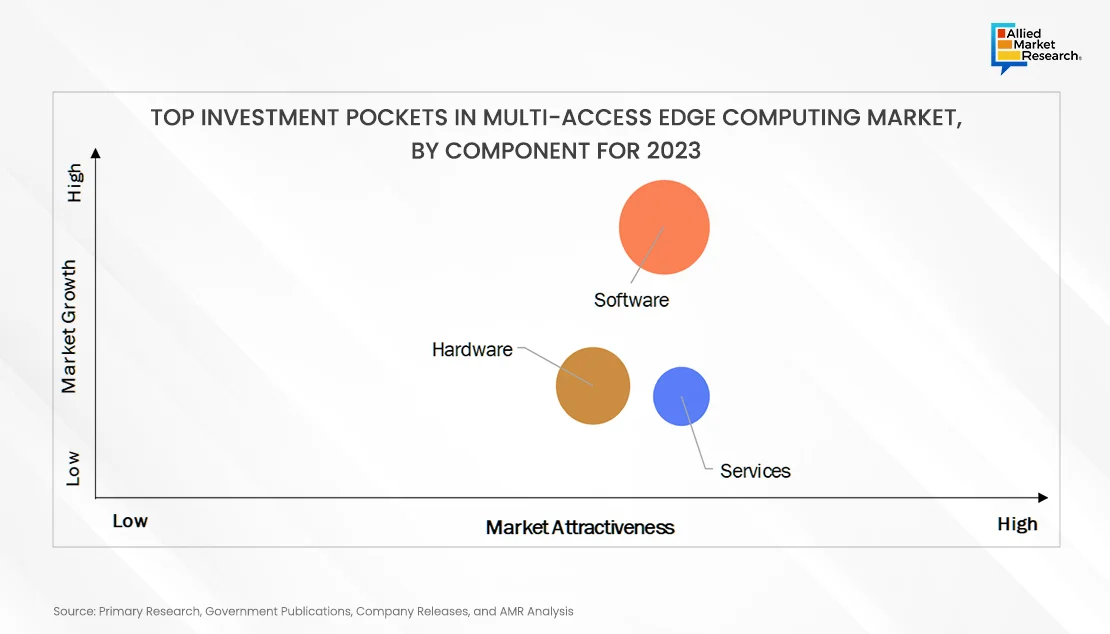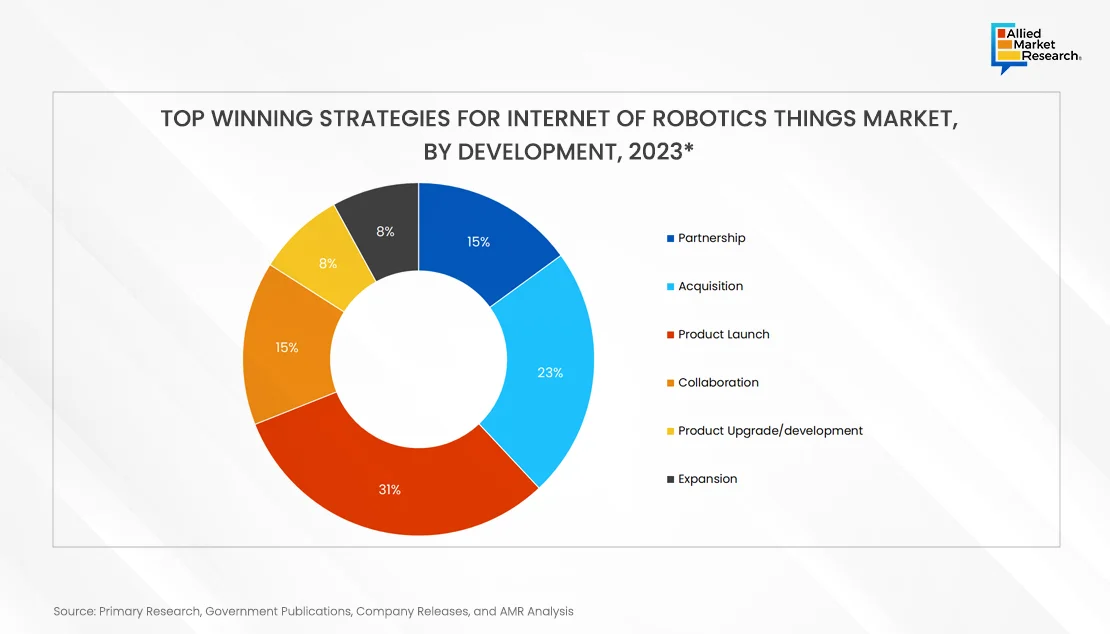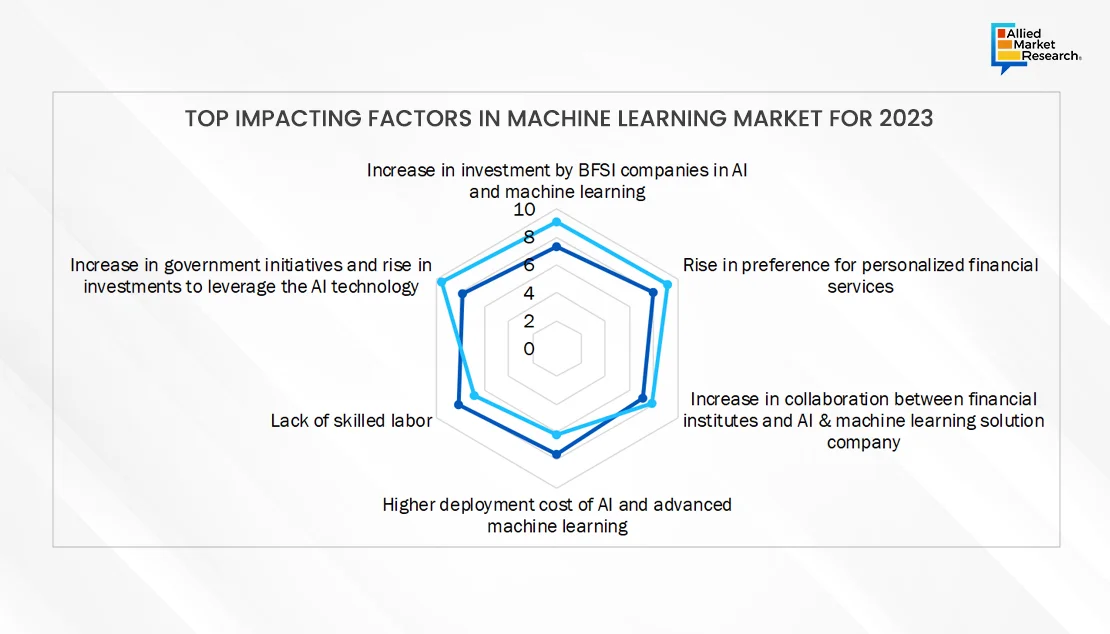Table Of Contents
- Notable Technological Trends of 2023
- Artificial Intelligence (AI)
- Growth Impacting Factors for AI
- Internet of Things (IoT)
- Growth Impacting Factors for IOT
- Edge Computing
- Growth Impacting Factors for Edge Computing
- Robotics and Automation
- Growth Impacting Factors for Robotics and Automation
- Machine Learning (ML)
- Growth Impacting Factors for Machine Learning
- The Bottom Line

Onkar Sumant

Pooja Parvatkar
2023: A Year of Transformation in Information and Communication Technology

The information and communication technology (ICT) industry has seen significant adoptions and changes in 2023 leading to a significant change in the global digital world. The global reaction to the COVID-19 pandemic has accelerated the use of technologies for remote work. Video conferencing and cooperation are now essential components of how businesses operate. As businesses looked for scalable and adaptable solutions that would enable better accessibility to data and apps, cloud computing continued to gain adoption in 2023. The growing demand for energy and resources to power ICT infrastructure raises concerns about its environmental impact. Sustainable practices and technologies need to be adopted to minimize the environmental footprint of the technology industry.
The year 2023 saw a turbulent landscape in the world of Information and Communication Technology (ICT), marked by major data breaches, cyberattacks, and technology outages. January itself saw a data breach at a credit reporting agency Equifax which exposed the personal information of over 20 million people in the UK. In addition, in May, a ransomware attack on Colonial Pipeline, a major fuel supplier in the U.S. which caused temporary fuel shortages and market disruptions. Furthermore, while technologies like AI, cloud computing, and IoT offer immense potential, they have also introduced new security challenges and ethical considerations. Organizations need to adapt and implement robust security measures to mitigate risks associated with these technologies.
Notable Technological Trends of 2023
Artificial Intelligence (AI)
The increasing use of AI technologies in 2023 across all industries was accelerated by the emergence of accessible platforms like no-code AI and simplified drag-and-drop interfaces. In January, Well Fargo was sued for allegedly using a biased AI model in loan application that discriminated against Black and Hispanic borrowers. Moreover, several open-source software libraries used in AI development faced vulnerabilities, raising concerns about the security of the entire supply chain as attackers might target these dependencies. For instance, in February 2023, Microsoft Copilot launched a notable chatbot, initially known as Bing Chat. It has proved to be a versatile tool, touted by Nadella as surpassing ChatGPT in certain functions.
Growth Impacting Factors for AI
The integration of Generative AI with Explainable AI and ethical considerations has significantly driven the growth of the ICT and media domain in 2023. A rapidly developing branch of artificial intelligence called generative AI is changing how material is created and how decisions are made across industries. However, this growth has brought out ethical considerations, particularly in ensuring that AI decisions are transparent and aligned with human values. The growing focus on Explainable AI in 2023 is crucial because it enables people to understand the logic behind AI judgements, encouraging ethical use of AI and building confidence. Organizations may build confidence with consumers and stakeholders by addressing ethical issues and maintaining transparency, driving the responsible and sustainable growth of AI in the ICT and media industry. This approach not only enhanced the trustworthiness and acceptance of AI technologies but also promoted accountability and ethical usage, which were essential for the industry's continued advancement and success in 2023. For instance, on 07 Feb 2024, OpenAI integrated watermarks into images produced by its DALL-E 3 model to enhance transparency and authenticity of AI-generated content. This decision came in response to the growing demand for standardized methods to identify and label AI content across social media platforms, with Meta leading the charge for industry-wide adoption.
Internet of Things (IoT)
Over the past decade, our homes have been equipped with smart TVs, connected kitchen appliances such as kettles and fridges, and smart alarm systems, cameras, and lightbulbs. The increasing integration of artificial intelligence (AI) and machine learning (ML) with IoT devices, has enabled more intelligent data processing and decision-making at the edge. Edge computing has gained prominence as it allows for faster data processing, reduced latency, and improved efficiency. The growth of 5G networks facilitates enhanced connectivity, enabling a higher number of devices to be interconnected seamlessly. Security concerns were also a significant trend in 2023, with a growing emphasis on implementing robust cybersecurity measures to protect IoT ecosystems from potential threats. In addition, data leaks from smart home devices, like security cameras and thermostats, continued to raise concerns about user privacy and potential misuse of personal data. Moreover, the U.S. and several other western countries proved highly resilient in the face of higher interest rates and elevated inflation, and they avoided a much-anticipated recession. The 2023 global GDP growth of 3.0% turned out to be higher than anticipated at the start of the year but still trailed the historic average by 0.8 percentage points. For instance, in August 2023, a Japan-based semiconductor manufacturer Renesas Electronics agreed to buy Sequans Communications, a France-based cellular IoT chipmaker, for $249 million. The deal expected to close in early 2024, is poised to expand Renesas’ foray into the IoT sector. The electronic company plans to integrate Sequan’s cellular IoT products into its microcontrollers and other products, enhancing its WAN market reach.
Growth Impacting Factors for IOT
The expansion of IoT devices in various industries and the increased focus on cybersecurity were the significant drivers of growth of IoT devices in the ICT and media industry in 2023. The proliferation of IoT devices across sectors such as healthcare, education, manufacturing, and smart cities is leading to a surge in data generation and connectivity. This, in turn, is creating new opportunities for ICT and media companies to develop innovative solutions for data management, analysis, and visualization. Moreover, as the amount of data transfer and data storage of IoT devices is increasing, the need for more advanced cybersecurity solutions and expertise is also growing. This is expected to bring more sophisticated cybersecurity solutions and expertise into demand, which in turn will propel the growth to the ICT and media industry. The interconnection of IoT devices to other technologies such as AI and cloud computing was the impetus that influenced the innovation and opened new horizons for businesses in the year 2023.
Edge Computing
Edge computing has revolutionized the digital landscape in 2023, making it an incredibly important aspect of our technological future. With the exponential growth of Internet of Things (IoT) devices and the increasing demand for real-time data processing, edge computing emerges as a game-changer. Integration of edge computing with technologies like AI and IoT introduces new security and ethical considerations that need to be addressed. Moreover, collecting, storing, and processing data at the edge raises concerns about user privacy, especially with growing regulation like GDPR and CCPA. Balancing data security and privacy needs remains a challenge. For instance, in December 2023, McDonald’s and Google announced a multi-year global partnership to utilize Google Cloud technology in its restaurants with a particular focus on generative AI and edge use cases. Multi-Access Edge Computing (MEC) market, companies can deploy tailored strategies based on specific components of the ecosystem. Infrastructure providers should prioritize scalable hardware solutions capable of handling diverse workloads and accommodating the expanding array of edge devices. The integration of energy-efficient features into hardware design aligns with sustainability objectives, addressing the unique challenges posed by edge deployments in varied environments.
Growth Impacting Factors for Edge Computing
As the demand for real-time analytics and insights continues to surge across various industries, the adoption of edge computing has experienced a significant upswing, positioning itself as a crucial driver in this technological landscape. Moreover, telecom giants like AT&T and Verizon are offering edge computing solutions tailored to specific industry’s needs, such as low-latency connectivity and secure data processing at the edge. In addition, edge computing is being used in various industries like manufacturing (predictive maintenance), healthcare (remote patient monitoring), and retail (personalized customer experience). These specific applications highlight the diverse potential of edge computing across different sectors.

The below infographic depicts that the software segment had the most lucrative investment followed by hardware and services respectively in 2023.?

Robotics and Automation
Robotics and automation which employ hardware and software to do activities that people used to do, are becoming more and more common in a variety of industries, including manufacturing, healthcare, and entertainment. For instance, according to International Federation of Robotics, the new World Robotics 2023 Industrial Robots and Service Robots report conveyed that 553,052 industrial robots were installed in factories around the world in 2022, a year-over-year growth rate of 5%. By region, 73% of all newly deployed robots were installed in Asia, 15% in Europe, and 10% in the Americas. In addition, robot sales in North American declined by 30% in 2023, according to the latest report from the Association for Advancing Automation (A3). Companies purchased 31,159 robots in 2023, compared to 44,196 ordered in 2022 and 39,708 in 2021. Furthermore, in 2023, the strongest demand for robots from non-automotive companies came from the metal industry, followed by semiconductor and electronics/photonics; food and consumer goods; life sciences, pharmaceutical and biomedical, plastics and rubber. Moreover, to succeed in the Internet of Robotics (IoR) market, companies should adopt strategies that prioritize interoperability, security, scalability, and advanced technologies. Ensuring that robotic devices and IoT solutions comply with industry standards is crucial for seamless integration with other devices and platforms, fostering a collaborative ecosystem. The following image gives data on the most adopted strategies by market players in 2023.
Growth Impacting Factors for Robotics and Automation
The development of more sophisticated robots with advanced sensing capabilities and an increased focus on robot-human collaboration is a significant trend driving growth in the Robotics and Automation sector within the ICT and media domain. Additionally, the ability of robots to learn from their environment, make decisions on their own, and work well with people has been greatly enhanced by the integration of artificial intelligence (AI) and machine learning algorithms. Robots are being used more and more in a variety of industries, such as manufacturing, healthcare, and logistics, because of the increased focus on robot-human collaboration, which is also improving safety, enhancing automation, and improving efficiency. For instance, in May 2022, iRobot Corp., a leader in consumer robots, introduced iRobot OS, an evolution of the company's Genius Home Intelligence platform. iRobot OS delivers a new level of customer experience for a cleaner, healthier and smarter home. By leveraging the unique strengths of humans and robots, organizations are experiencing increased productivity, improved precision and accuracy, enhanced workplace safety, and innovation in customer service, ultimately transforming industries and driving growth in the ICT and media domain.

Machine Learning (ML)
As machine learning adoption continues to grow rapidly across industries, data science and machine learning is evolving from just focusing on predictive models, toward a more democratized, dynamic, and data-centric discipline,” said Peter Krensky, director analyst at Gartner.
Growth Impacting Factors for Machine Learning
Machine learning has become essential for media and tech companies looking to improve personalization, content discoverability, operational efficiency, and innovation capabilities. But developing accurate machine learning models requires specialized data science talent and expertise that are scarce. This is why automated machine learning (AutoML) solutions are gaining popularity within ICT and media for democratizing the use of AI across business functions. AutoML leverages algorithms to automate the end-to-end process of applying machine learning to data, without needing coding or the mathematical complexity of neural networks. In addition, by abstracting away AI complexity, Automated Machine Learning opens data-driven competitive advantages to more companies. According to research firm Gartner, by 2025 over 75% of large enterprises will shift from piloting to fully operationalizing AI owing to AutoML driving scalability and ease of model production. For tech leaders, embracing user-friendly AutoML capabilities is key for accelerating digital transformation powered by AI's exponential benefits.
The Bottom Line
The Information and Communication Technology (ICT) industry witnessed a remarkable transformation in the year 2023, driven by significant technological advancements and changing consumer demands. From the widespread adoption of Artificial Intelligence (AI) and Generative AI to the proliferation of Internet of Things (IoT) devices and the emergence of edge computing, the digital landscape underwent profound changes. Additionally, Robotics and Automation, coupled with the continued development of Machine Learning (ML) and automated ML solutions, further propelled innovation and efficiency across various sectors.
As we navigate through this era of rapid technological evolution, it becomes imperative for businesses and stakeholders alike to stay informed and adapt to the evolving landscape of the ICT industry. For in-depth insights into industry trends, emerging technologies, and investment opportunities, contact AMR analysts today. Stay ahead of the curve and unlock the potential of the digital future with expert guidance from AMR.

